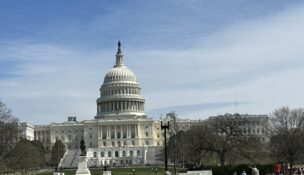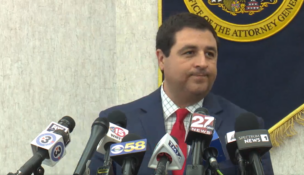Schimel suing over ozone rules
By: Dan Shaw, [email protected]//April 25, 2016//
Wisconsin justice officials announced Monday that they have joined other states in a challenge of federal ozone limits that opponents contend will discourage employers from moving to places where the new standards fall most heavily on businesses.
In Murray Energy Corp. v. the Environmental Protection Agency, states and industries are challenging new ozone standards handed down by federal officials on Oct. 26. The new 8-hour National Ambient Air Quality Standard sets a 70-parts-per-billion cap for ozone.
In a news release, Wisconsin’s Department of Justice argued that the new restrictions will force manufacturers and power producers to pay dearly for the pollution-control equipment needed to bring the state into compliance. Companies will be disinclined to move to places where such costs are particularly high.
State officials argued that ozone often comes from sources that are beyond the control of anyone living in the U.S. Some of it is borne across international borders by wind. Ozone is also a byproduct of natural events such as lightning and wildfires, according to the release.
“Wisconsin is expected to take impossible measures, like controlling the weather, under the new Ozone NAAQS,” Attorney General Brad Schimel said in the official statement. “We will not tolerate another instance of the EPA’s unconstitutional abuse of power as it continues to hammer job makers in our state with costly regulation.”
The U.S. Department of Justice has until July 22 to file a reply to the challenge put forward by Wisconsin and other states.
Schimel has proved willing in the past to contest presidential executive orders.
In April, for instance, Wisconsin joined 14 other states in a lawsuit challenging preliminary rules that would have forced them to reduce greenhouse-gas emissions by certain percentages by 2030. A federal appeals court in Washington, D.C., threw the lawsuit out in June, finding that the court lacked authority to review the rule since hadn’t yet been made final.
Schimel is now weighing a challenge of a new version of the rules, which now call for Wisconsin to reduce carbon emissions by 25 percent by 2024 and by 41 percent by 2030. Follow @TDR_WLJDan
Legal News
- Wisconsin Attorney General asks Congress to expand reproductive health services
- Attorney General Kaul releases update at three-year anniversary of clergy and faith leader abuse initiative
- State Bar leaders remain deeply divided over special purpose trust
- Former Wisconsin college chancellor fired over porn career is fighting to keep his faculty post
- Pecker says he pledged to be Trump campaign’s ‘eyes and ears’ during 2016 race
- A conservative quest to limit diversity programs gains momentum in states
- Wisconsin prison inmate pleads not guilty to killing cellmate
- Waukesha man sentenced to 30 years for Sex Trafficking
- 12-year-old shot in Milwaukee Wednesday with ‘serious injuries’
- Milwaukee man convicted of laundering proceeds of business email compromise fraud schemes
- Giuliani, Meadows among 18 indicted in Arizona fake electors case
- Some State Bar diversity participants walk away from program
WLJ People
- Power 30 Personal Injury Attorneys – Russell Nicolet
- Power 30 Personal Injury Attorneys – Benjamin Nicolet
- Power 30 Personal Injury Attorneys – Dustin T. Woehl
- Power 30 Personal Injury Attorneys – Katherine Metzger
- Power 30 Personal Injury Attorneys – Joseph Ryan
- Power 30 Personal Injury Attorneys – James M. Ryan
- Power 30 Personal Injury Attorneys – Dana Wachs
- Power 30 Personal Injury Attorneys – Mark L. Thomsen
- Power 30 Personal Injury Attorneys – Matthew Lein
- Power 30 Personal Injury Attorneys – Jeffrey A. Pitman
- Power 30 Personal Injury Attorneys – William Pemberton
- Power 30 Personal Injury Attorneys – Howard S. Sicula











